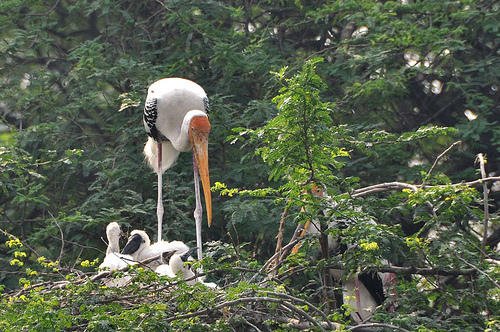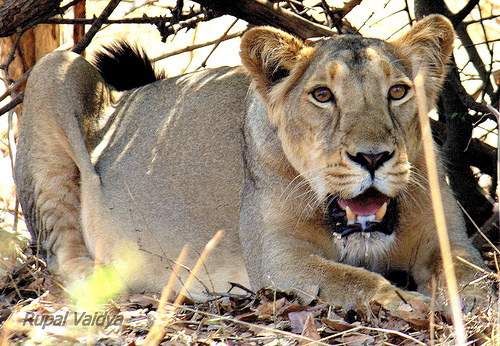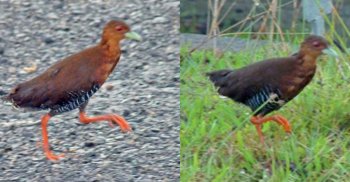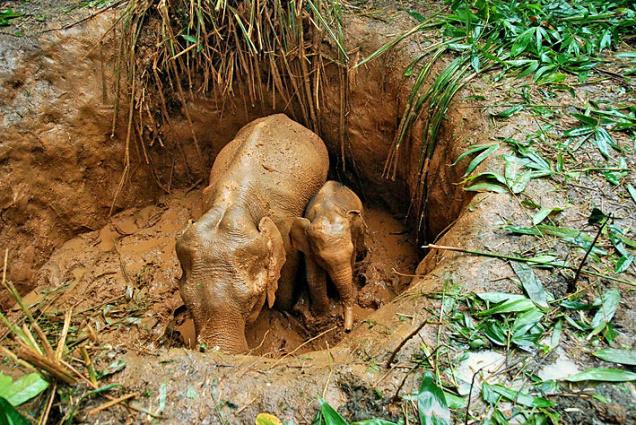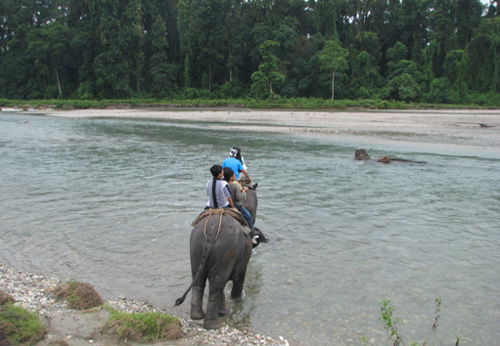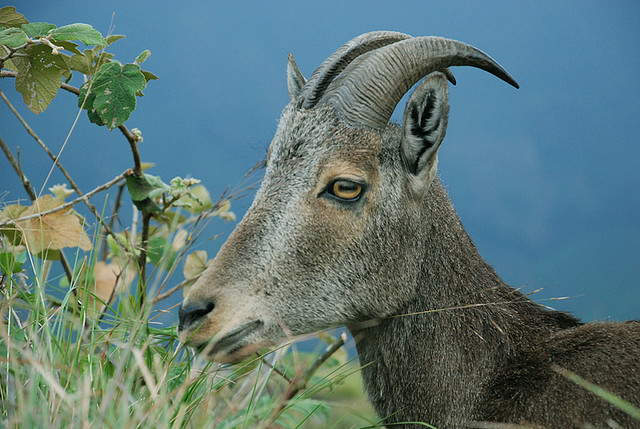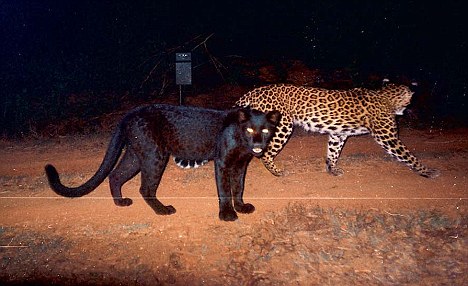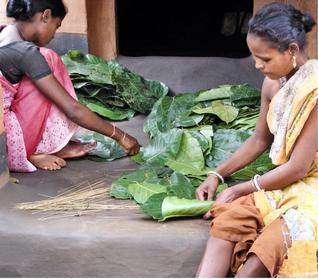Tucked away near the eastern border of Rajasthan state and adjacent to the Banganga River is a large & shallow concave wetland – The Keoladeo Ghana National Park, more commonly known as the Bharatpur Bird Sanctuary. Being home to over 350 species of birds, it is this place that is every bird lover’s favourite destination.
Rise in Livestock Numbers Once again a Problem at Gir
When Sasan Gir National Park in Gujarat the last bastion of the Asiatic Lion was first recognized as a protected reserve in the 70s it was impertinent that the homes of the pastoral community living within the forest be shifted. Many such villages were thus moved further away from the core area. Over the years, the gradual increase in lion population proved that the decision to minimize human interference, helped protect a rare species. But now, some experts say that as the lions number increase, once again competing population of livestock and wild ungulates in and around Gir is overcrowding the area.
Only Rhino in Man-made Forest Killed by Poachers
For the last 30 years, Jadav Payeng has been the lone warrior who created a forest in a barren land in Assam. Jadav’s relentless crusade was rewarded when wildlife including a rhinoceros made the forest its home. But the happiness was short lived. Last Wednesday poachers killed the adult rhino for its horn leaving Jadav in despair and the forest department failing to save a rhino yet again.
New Bird discovered in Andaman & Nicobar Islands
A team of scientists from the Zoological Survey of India, have discovered a new bird species in the Andaman & Nicobar Islands. The new bird species named ‘Great Nicobar Crake’ is said to be from the Rallina family of birds and is the first new bird species to be discovered in India since independence.
Elephant Mother and Baby Rescued from Deep Pit
A mother elephant and her calf were rescued from a 20 feet deep pit last week by forest officers near Vadattupara in Kothamangalam in Kerala. The duo was in the pit for more than 24 hours before they could be rescued.
Arunachal Villagers Surrender Guns to Stop Hunting
In a rare display of realization of past mistakes, five villagers of Arunanchal Pradesh, surrendered their air guns to the District Forest Officer (DFO) saying they now know the worth of their natural surroundings.
Jumbo Ferries Saving Marooned Villagers
Jumbos of North Bengal have become the only means of transportation for people of flood-hit villages near Gorumara National Park under Jalpaiguri Forest Division with most villages having turned into a watery island.
Supreme Court Bans Tiger Tourism
In a decision many are calling too harsh, the Supreme Court of India banned tourists to enter the core area of all tiger reserves in the country. With India being home to half of the global population of tigers, this means, India will be facing a major setback in number of travelers coming to the country to particularly see the tigers.
How Much is too Much
The declaration of the Western Ghats as a World Heritage Site is another milestone achieved towards conservation of India’s vast bio-diversity. But along with world heritage tag comes the added responsibility of ensuring that this heritage is carefully preserved. In view of the expected increase in tourism activities at the heritage sites, the World Heritage Committee has therefore asked India to take proper measures to avoid any possibility of negative impacts.
Black Leopard spotted in Karnataka Forest
If you have read Rudyard Kipling’s Jungle Book or seen the animated series, you are sure to remember Bagheera, the beloved friend and guide of mowgli. Now, you can catch bagheera for real, at the Dandeli-Anshi tiger reserve in Karnataka where camera traps have found the presence of the black leopard.
Tribal Women Save Forest being Cut in the name of Eco-tourism
Manchabandha Reserve Forest in Orissa is home to humans as well as wildlife. They co-exist in harmony and peace. The Sal trees that cover the forest area form the chief source of food and income for the local tribes like Santhal, Kolha and Lodha who live in the nearby villages in the Mayurbhanj district. The chief economic activity of the tribal women is making Sal leaf plates. They also gather other forest products like mushrooms and the Mahua flowers.

